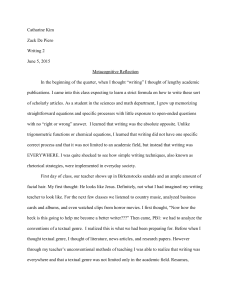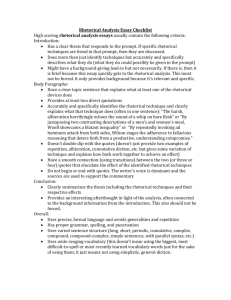Discussion post 2
advertisement
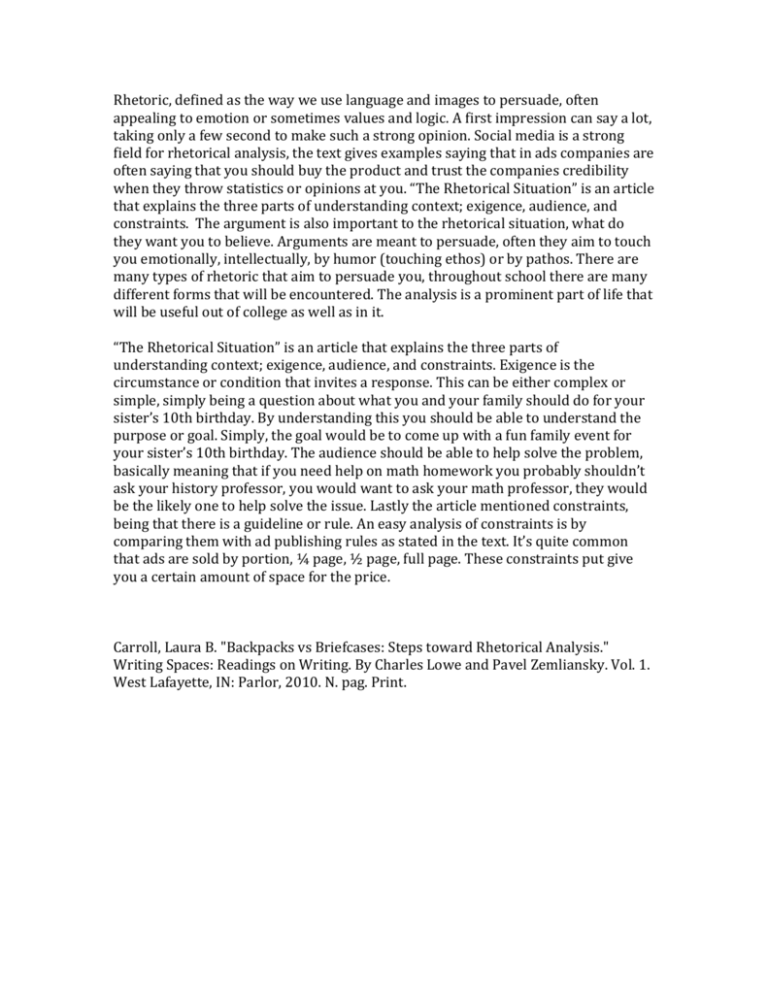
Rhetoric, defined as the way we use language and images to persuade, often appealing to emotion or sometimes values and logic. A first impression can say a lot, taking only a few second to make such a strong opinion. Social media is a strong field for rhetorical analysis, the text gives examples saying that in ads companies are often saying that you should buy the product and trust the companies credibility when they throw statistics or opinions at you. “The Rhetorical Situation” is an article that explains the three parts of understanding context; exigence, audience, and constraints. The argument is also important to the rhetorical situation, what do they want you to believe. Arguments are meant to persuade, often they aim to touch you emotionally, intellectually, by humor (touching ethos) or by pathos. There are many types of rhetoric that aim to persuade you, throughout school there are many different forms that will be encountered. The analysis is a prominent part of life that will be useful out of college as well as in it. “The Rhetorical Situation” is an article that explains the three parts of understanding context; exigence, audience, and constraints. Exigence is the circumstance or condition that invites a response. This can be either complex or simple, simply being a question about what you and your family should do for your sister’s 10th birthday. By understanding this you should be able to understand the purpose or goal. Simply, the goal would be to come up with a fun family event for your sister’s 10th birthday. The audience should be able to help solve the problem, basically meaning that if you need help on math homework you probably shouldn’t ask your history professor, you would want to ask your math professor, they would be the likely one to help solve the issue. Lastly the article mentioned constraints, being that there is a guideline or rule. An easy analysis of constraints is by comparing them with ad publishing rules as stated in the text. It’s quite common that ads are sold by portion, ¼ page, ½ page, full page. These constraints put give you a certain amount of space for the price. Carroll, Laura B. "Backpacks vs Briefcases: Steps toward Rhetorical Analysis." Writing Spaces: Readings on Writing. By Charles Lowe and Pavel Zemliansky. Vol. 1. West Lafayette, IN: Parlor, 2010. N. pag. Print.
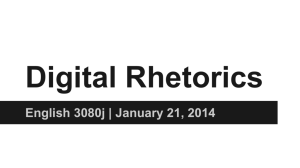

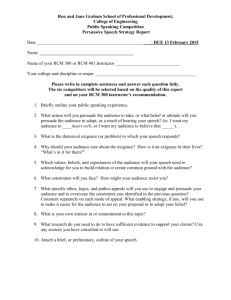

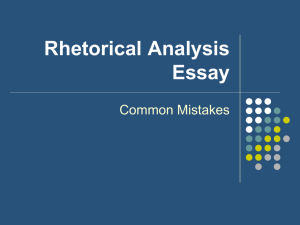



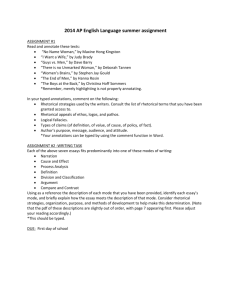
![Qualitative methods rhet crit to narrative crit[1]](http://s3.studylib.net/store/data/008471378_1-c32429b457384e7e3b83881a0a4f37c1-300x300.png)
